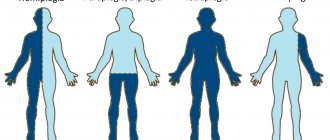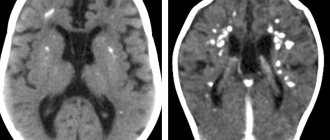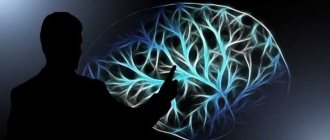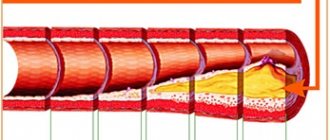Neurologists point out that hemiplegia is a condition in which a person is unable to make voluntary movements in one part of the body due to a failure in the conduction of nerve impulses along the fiber. This disorder occurs for various reasons - from infectious lesions to injuries and neoplasms. Therefore, treatment tactics in each situation will be selected by the doctor individually. If a person seeks medical help in a timely manner, the pathology can be dealt with in a short time.
What is hemiplegia
Anatomically, hemiplegia is a partial limitation of the functioning of the nervous regulation of muscle fibers. In this case, doctors talk about pyramidal insufficiency - the impulse from the cells of the cerebral cortex does not fully reach the motor neurons in the anterior horns of the spinal cord. It is for this reason that a person partially loses the ability to voluntarily regulate his movements. The situation is reversible - recovery after appropriate treatment occurs quickly.
Whereas, what is hemiparesis, right-sided or left-sided damage is more severe damage to the nerve fiber. Physiological blockade and even destruction of motor neurons are practically impossible to correct. The muscles gradually completely atrophy and motor activity in the affected part of the body stops.
This is the difference and difference between hemiparesis and hemiplegia - the possibility of recovery. In addition, it is necessary to take into account that in the medulla oblongata the fibers of the pyramidal tract undergo partial decussation. Therefore, visible symptoms of a malfunction in the muscle fibers on the right imply a pathological focus on the left in the cerebral hemispheres. When consulting, specialists, explaining to a person right-sided hemiparesis what it is, point out similar nuances of their disease.
Prevention and prognosis
To date, no specific measures have been developed to prevent the development of this disorder. General preventive recommendations include:
- control over the adequate course of pregnancy;
- complete cessation of bad habits;
- proper and balanced nutrition;
- moderate physical activity (physical activity);
- avoiding head and spinal cord injuries;
- timely detection and treatment of pathological etiological factors (in particular, the most common cause is ischemic stroke), which can lead to the development of such a problem;
- Regularly undergoing a full preventive examination at a medical institution with visits to all clinicians.
Hemiplegia has several possible outcomes:
- complete recovery – motor activity of sore arms and legs is fully restored;
- independent regression with minor residual effects;
- acquisition of a permanent nature - in this case, the disease will not respond to therapy.
Every person in his life periodically encounters certain diseases. This always unpleasant situation is accompanied by anxiety, confusion and even fear.
Of particular concern are medical definitions whose meaning is unknown.
Causes
Based on the characteristics of the appearance of muscle weakness - hemiplegia, neurologists classify it as a disease of a secondary nature, the causes of which must be sought in damage to the structures of the central nervous system.
The following factors can lead to the development of hemiaparesis:
- Cerebral or spinal strokes are the destruction of nerve cells due to rupture of blood vessels or blockage of their lumen by a thrombus or embolus. Directly depending on the location of the lesion, certain symptoms of a malfunction in the nerve conduction of impulses along the descending path will be observed. Doctors explain up to 2/3 of cases of hemiplegia by strokes.
- Traumatic brain damage to the tissues of the cerebral hemispheres - due to a direct blow to them, or indirectly, for example, in a car accident. In terms of severity, it can be a slight bruise or complete destruction of one of the areas of the brain - a person experiences partial impairment of movements or widespread paralysis.
- Destruction of nerve fiber sheaths due to autoimmune processes - Alzheimer's disease. Experts have not definitively established the reasons for the formation of such a disease, however, they point to a family predisposition.
- Neuroinfections are the penetration of pathogens of infectious diseases into the brain tissue from the outside, or from internal foci. Most often, doctors diagnose meningitis, neurosyphilis, encephalitis, and tuberculosis.
- Neoplasms - if after a stroke the tissues are compressed by hematomas, then with tumors the brain and nerve conduction suffer from rapidly growing additional formations. They can be either single or multiple.
Among additional factors provoking hemiplegia, neurologists point to the hysterical personality type of people and helminthic infestations. Sometimes pathology occurs due to intoxication and congenital defects of the nervous system.
Symptoms and treatment
Increased muscle tone is a consequence of damage to the brain or spinal cord. To reduce muscle tone, drugs from the group of muscle relaxants are prescribed, which can reduce these symptoms (translated as muscle relaxants). From the very name of this pharmacological group it follows that these drugs reduce muscle tone. They are prescribed by the attending physician.
Muscle relaxants can be prescribed for a long period - up to six months, and in some cases more. Why such deadlines? – because in case of damage to the brain and spinal cord, the cause of increased muscle tone is a consequence of damage to nerve cells and it will occur during the period until the function of the damaged area of nervous tissue is restored, and in case of damage to the brain and spinal cord, this is usually months.
Very important! – the role of muscle relaxants is not just in relaxing skeletal muscles, but in preparing the arm and (or) leg for rehabilitation measures, for example: physical therapy (and) or massage.
Since the cause of hemiparesis is damage to the nerve cells and pathways of the brain and spinal cord, these damaged areas and pathways must first be restored.
Muscle relaxants will not restore damaged cells, but they can create conditions for favorable rehabilitation. Therefore, remember the precious time that nature has allocated for maximum recovery. Read about the timing of the most effective rehabilitation for stroke here.
If during the first year there is no restoration of the damaged area of the brain, then often spastic hemiparesis takes on a long, persistent course, persisting for many years, especially if hemiplegia has already formed. In this case, correction of increased spastic tone is carried out with repeated courses of muscle relaxants, courses of medical massage, physiotherapy, and possibly the use of acupuncture.
There are many physiotherapeutic methods, but only a few of them have a reliable property of relaxing muscle tissue. Which physiotherapy methods are indicated in a particular case of hemiparesis and hemiplegia is determined by the physiotherapist.
Restoration of nerve cells in the brain is a complex matter and these processes are tied to the entire activity of the central nervous system. Of course, the individual volitional qualities of a person - his desire and great desire for recovery, supported by regular exercise therapy and constant training - are the main foundation for complete rehabilitation. Therefore, if hemiparesis is a consequence of injury or stroke, its treatment should not consist only of taking medications. This plays a supporting role, but not the main one.
Video about spasticity with hemiparesis - when it appears and what to do.
Questions about the structure of consciousness, as a source of volitional and other mental processes, still cover many paths to recovery that are yet to be discovered in the future. Please pay attention to the separate article, rehabilitation after a stroke, where you will read even more about recovery after stroke.
Classification
In order to facilitate and speed up the diagnosis of hemiplegia, in international neurological practice it is customary to rely on the developed classification of the pathological disorder. Thus, according to the etiological factor, hemiparesis and hemiplegia can be organic - persistent cerebral disorders, as well as functional - they can disappear on their own, without treatment procedures.
Taking into account the localization of the pathological focus, it is customary to distinguish right-sided or left-sided hemiplegia, contralateral - the focus is located on the side opposite to the lesion, homolateral - on the same half of the body. Less commonly, double hemiplegia occurs - limbs are involved in the process on both sides at once.
According to the variant of the course of the disease, a cross arrangement should be distinguished - for example, right-sided hemiplegia of the arm, but the leg is affected on the left. In addition, the doctor indicates central or spinal spastic hemiparesis in the diagnosis. Whereas in terms of stages it can be progressive spastic hemiplegia, or regressive - the restoration of conduction along the nerve fiber has begun.
Based on the age of the patient, it is traditionally described as childhood hemiplegia or the disease developed in an adult. Of course, in children it is more difficult to diagnose and treat the disorder in a timely manner, since it is not always possible to establish its true cause. Meanwhile, previous complex therapy for right-sided/left-sided hemiparesis in children has a good prognosis for full recovery.
Kinds
According to the etiological factor, hemiplegia occurs:
- organic;
- functional.
According to the type of motor neuron affected:
- central (spastic);
- peripheral (sluggish).
According to the location of the muscles involved:
- right-sided;
- left-handed.
Depending on the location relative to the lesion:
- contralateral (with central damage, on the opposite side);
- homolateral (with peripheral lesions, on the side of the lesion);
- double.
Variants of lesions in hemiplegia
By level of damage:
- cortical (with damage to the motor area of the cerebral cortex);
- supracapsular (the focus is located closer to the internal capsule);
- cortical-subcortical;
- pyramidal-thalamic (in the area of the visual thalamus);
- capsular;
- alternating (cranial nerves suffer on the affected side, and hemiplegia develops on the opposite);
- alternating optic-pyramidal (one-sided blindness on the affected side and hemiplegia on the opposite side);
- cross (at the intersection of the fibers of the tract);
- spinal (no damage to the cranial nerves).
Depending on the stage of the pathological process:
- diaschisal (occurs in the acute period of coma due to shock changes in the centers of the brain);
- progressive (with a long, increasing course of the underlying disease);
- regressing (with clinical improvement).
The anatomical substrate for the development of hemiplegia is a lesion at various levels of the pyramidal tract, through which the transmission of nerve impulses occurs in the superior-inferior direction.
Symptoms
Since hemiplegia is based on damage to the pyramidal tract of the nerve innervation of muscle fibers, its main clinical sign will be the absence of voluntary movements - usually on the opposite side, cross, or less often on the same side. The person is unable to follow the doctor’s command - raise an arm/leg, smile, turn around.
Other specific signs of hemiparesis are:
- hypertonicity - a sharp increase in muscle tone of the affected limb;
- enhanced tendon and periosteal reflexes, Babinsky, for example;
- simultaneous decrease in joint reflexes;
- formation of pathological reflexes in a paralyzed arm/leg.
Additionally, a person may have clinical signs of hemiparesis, such as distortion of facial expressions - against the background of hemiparesis, both the function of the hand and facial muscles suffers. Due to weakening of the nerves on the affected side, speech disturbance will occur - slurred, unclear, sluggish.
Additional symptoms of hemiparesis:
- cyanosis and coldness of the skin;
- difficulty moving, self-care;
- involuntary muscle contractions, cramps;
- discomfort in the parts of the body involved in the process;
- decreased superficial as well as deep sensitivity;
- intellectual childhood retardation.
With mild hemiplegia, the above symptoms disappear on their own. Whereas with moderate and severe stages of hemiparesis, mandatory comprehensive treatment is required.
Signs
Symptoms of central hemiplegia:
- complete absence of active movements in the affected limbs, facial muscles on the side opposite to the lesion;
- spastic muscle hypertonicity;
- jackknife symptom (muscular resistance when trying to passively bend the patient’s limb at the knee or elbow joints, after overcoming the initial resistance, flexion occurs without difficulty);
- increased tendon and periosteal reflexes in paralyzed limbs;
- decreased abdominal reflexes on the hemiplegic side;
- decreased deep and superficial sensitivity;
- decreased joint reflexes (Leri, Mayer);
- pathological reflexes of the limbs (Babinsky, Gordon, Oppenheim, Schaeffer, extensor reflexes of Redlich and Rossolimo, Bekhterev - Mendel, Zhukovsky, etc.);
- identification of reflexes of spinal automatism;
- concomitant synkinesis (involuntary muscle contractions and movements accompanying an active motor act).
Gait options for hemiplegia
With peripheral hemiplegia, muscle tone is reduced (a combination of spastic changes in muscle tone with hypotension is possible), reflexes are also reduced on the affected side. In this case, facial muscles are not involved in the pathological process.
Diagnostics
Neurologists, as a rule, do not have any difficulties in establishing the diagnosis of hemiplegia - it is enough to conduct a thorough examination of the patient. However, for differential diagnosis and identification of the true cause of the disorder, it will be necessary to conduct many instrumental and laboratory studies:
- blood tests - general, biochemical;
- computed tomography/magnetic resonance imaging – will exclude space-occupying lesions and strokes;
- electromyography - especially the motor area of the cerebral cortex;
- lumbar puncture – allows you to identify various neuroinfections;
- tumor markers – early diagnosis of cancer;
- assessment of hormonal levels - pathologies of the thyroid gland, adrenal glands, as provocateurs of disruption of nervous activity.
Only after comparing the information from the above diagnostic procedures with complaints, anamnesis - when unpleasant sensations arose, their intensity, localization, a neurologist will be able to make the correct diagnosis of hemiparesis and select the appropriate therapy.
Definition of the concept
Hemiplegia is a neurological syndrome manifested by a complete absence of voluntary movements in the upper and lower limbs on one side.
The pathology occurs as a result of total damage to the pyramidal tract, in particular its corticospinal part, which is responsible for the motility of skeletal muscles.
In clinical practice, hemiplegia is often considered synonymous with hemiparesis, or hemiparalysis. However, classical neurological schools define hemiplegia as a kind of stage of damage to the pyramidal tract, the immediate outcome depends on the characteristics of its course.
This may indeed be hemiparalysis (lack of movement in the limbs due to irreversible changes) or hemiparesis (limitation of the ability to perform voluntary movements and a decrease in their volume due to partial damage to the corticospinal tract).
Treatment tactics
The main emphasis in the treatment of hemiplegia, of course, falls on the elimination of the provoking factor that formed the basis of the disorder. Thus, in the case of a stroke, the administration of neuroprotectors and vasoactive drugs, subgroup B vitamins is justified. Whereas a tumor disease of the brain requires surgical intervention followed by early rehabilitation.
Among the medications in demand for hemiparesis:
- drugs to improve nerve conduction;
- muscle relaxants;
- antioxidants;
- analgesics;
- vitamins;
- cholinesterase inhibitors.
Massage and therapeutic exercises, as well as various physiotherapy techniques, for example, electrical stimulation of muscle fiber, magnetic therapy, barotherapy, or laser therapy, have a direct effect on muscle groups affected by hemiparesis. The use of standers is effective - special devices that allow a person with hemiparesis to assume a vertical position.
Among alternative medicines, acupuncture and manual therapy have proven themselves to be excellent for hemiparesis. Traditional medicine recipes - decoctions and infusions of herbs, rubbing with ointments from extracts of medicinal plants can complement the main therapy, but should not replace them.
Another mandatory component of the treatment of hemiparesis is psychotherapy and social adaptation. A person is helped to restore himself in the professional sphere, undergo retraining to get a job, or he is assigned a disability group with the provision of social and everyday support.
Treatment
In complex therapy of hemiplegia, the following are used:
- drugs that improve metabolic and trophic processes in nervous tissue;
- neuroprotectors;
- muscle relaxants;
- antioxidants;
- cholinesterase inhibitors;
- physiotherapeutic effects (massage, electrophoresis, kinesiotherapy, exercise therapy).
Physiotherapy plays an important role in the treatment of hemiplegia
Consequences and complications
It is not always possible to eliminate hemiparesis completely. So, due to a severe injury, the consequence will be a permanent impairment of the movements of the arms and legs - on one or both sides. The prognosis directly depends on the area of damage to brain structures, the timeliness of complex treatment and the initial state of human health.
If the decrease in muscle strength is reversible, then complete restoration of motor activity and a return to normal life is possible. In 1/3 of cases of hemiparesis, this requires long-term comprehensive rehabilitation - courses in specially equipped centers, where specialists purposefully influence the nervous system. However, sometimes it is not possible to cope with hemiplegia - it transforms into persistent hemiparesis, especially in the cross-sectional form of the disease. A person becomes deeply disabled and requires constant outside care.
Nevertheless, hemiplegia can and should be fought. For this purpose, specialists are developing new programs, inventing modern medicines and physical procedures. With the right goal setting, you can always achieve the desired result.
Pathogenesis of the disorder
Hemiparesis is a disease characterized by partial paralysis, which provokes weakening of muscle tissue on a certain side of the body. At the same time, the other side remains healthy.
This condition is a consequence of damage to the upper motor neurons, as well as their axons. In addition, there may be a disruption in the functioning of motor neurons. In most cases, this disease is of cerebral rather than spinal origin.
To determine the severity of the manifestations of the disease, you need to pay attention to the symptoms of focal damage to the cortex. To them
include speech disorders, problems with making purposeful movements, and difficulties in perception. A person may also experience epileptic seizures, sensory disturbances, and cognitive disorders.
Individual brainstem lesions are characterized by a combination of ipsilateral lesions of the nerves located in the head with contralateral hemiparesis.
If a person has abnormalities in the structure of the body, the disease develops more rapidly.
In this case, the patient may experience postictal hemiparesis, which develops after a focal motor attack.
This disease is characterized by the presence of epileptic seizures, which affect the formation of a brain abscess or tumor.
- Muscle pain
- Increased periosteal reflexes
- Increased tendon reflexes
- Muscle hypertonicity
- Distortion of facial expressions
- Speech Impairment
- Sensory impairment
- Involuntary movements of the limbs
- Inability to self-care
- Swelling in the affected area
- Pathological reflexes in paralyzed limbs
- Decreased joint reflexes
- Loss of arm and leg movement on one side
- Coldness of the affected limb
- Blueness of the skin
- Convulsions
- Difficulty walking
- Mental retardation
Hemiplegia (syn. hemiparesis) is the absence of voluntary movements in one half of the body, which is a consequence of a disruption in the process of transmission of nerve impulses directly from higher centers to the working muscles. In addition to the upper and lower limbs, the pathology may involve the muscles of the trunk and face on the affected side.
- Etiology
- Classification
- Symptoms
- Diagnostics
- Treatment
- Prevention and prognosis
The causes of the disease are always pathological in nature and may include internal hemorrhages, traumatic brain injuries, spinal cord contusions, various neoplasms, mental disorders and neuroinfections.
The symptoms are specific and pronounced. The main signs are considered to be spastic muscle hypertonicity, increased reflexes in the affected arm or leg, and involuntary muscle contractions and movements.
The diagnosis is made based on the results of a neurological examination of the patient, instrumental procedures and primary diagnostic manipulations, which are carried out personally by a neurologist.
Treatment is primarily aimed at eliminating the underlying disease, but in general it is limited to conservative therapeutic methods, including taking medications, physical therapy, physiotherapy and therapeutic massage.
In the International Classification of Diseases, 10th revision, this deviation is given a separate meaning: the ICD-10 code will be G81, for the congenital type - G80.2.
Clinical manifestations
Considering that hemiplegia is manifested by the absence of voluntary movements in the limbs on the nominal side, clinically it can be right-sided, left-sided or double, which is most often observed in cerebral palsy.
Depending on where the damage to the motor tract occurred (its central or peripheral neuron was damaged), hemiplegia can be central or spastic and peripheral or flaccid.
Spastic hemiplegia always has a number of common features. Firstly, tendon reflexes are increased in the affected limbs (carporadial, bicipital and tricipital for the upper limb and knee and Achilles for the lower).
This occurs due to the lack of a dominant influence of the affected pyramidal tract on the conditioned reflex arcs.
Muscle tone also increases, which in its essence is also an unconditioned reflex. In this case, hypertonicity in the upper limb manifests itself in the flexor muscles, and in the lower limb - in the extensor muscles.
In addition, so-called pathological reflexes begin to appear on paralyzed limbs - these are innate unconditional reactions of the body, which are gradually suppressed by the active function of the corticospinal tract.
- flexion foot signs of Rossalimo, Zhukovsky, Bekhterev;
- extensor foot signs of Babinski, Oppenheim, Gordon and Schaeffer;
- symptoms of oral automatism;
- pathological signs from the upper limb (Rossolimo, Jacobson-Lask, Bekhterev, Zhukovsky).
Peripheral plegia is characterized by decreased muscle tone, muscle atrophy and loss of reflexes.
These changes occur as a result of damage to the peripheral motor neuron, which is why the reflex arc does not close.
Topical diagnostics
Topical diagnosis is based on the presence of a complete decussion of the pyramidal tract at the level of the medulla oblongata for the muscles of the upper and lower extremities.
- In case of central right-sided hemiplegia, the lesion should be looked for in the left hemisphere of the brain, in the left sections of the cerebral trunk, or in the right lateral column of the spinal cord above the cervical enlargement (it is in these sections that the first neuron of the pyramidal tract passes).
- The same can be said about left-sided hemiplegia, in the presence of which pathology should be assumed in the right parts of the brain or in the left lateral column of the spinal cord to the level of the segments providing innervation to the upper limb.
- If the pathological process affected half the diameter of the spinal cord at the level of the cervical enlargement (segments C5-Th1), hemiplegia will be represented by a spastic lesion for the lower limb and flaccid plegia for the upper (due to damage to peripheral alpha motor neurons).
- If the lesion is localized in the spinal cord, below the cervical enlargement, the disorder will not be observed, since the arms will be intact.









